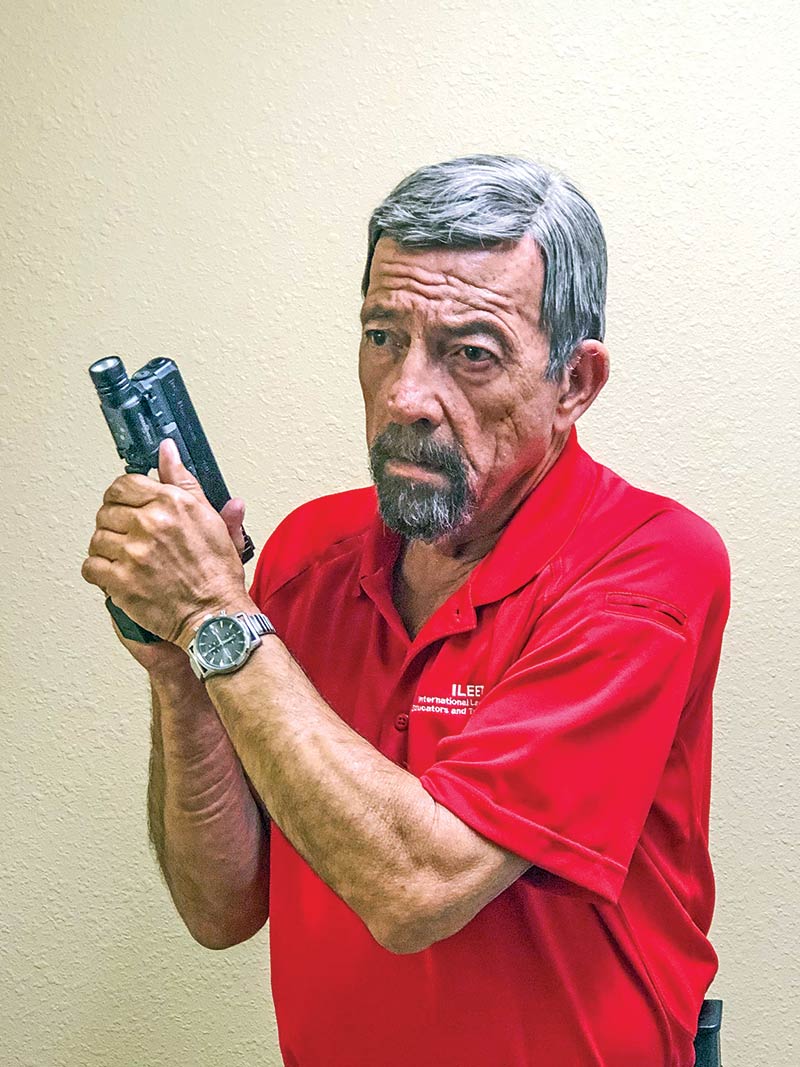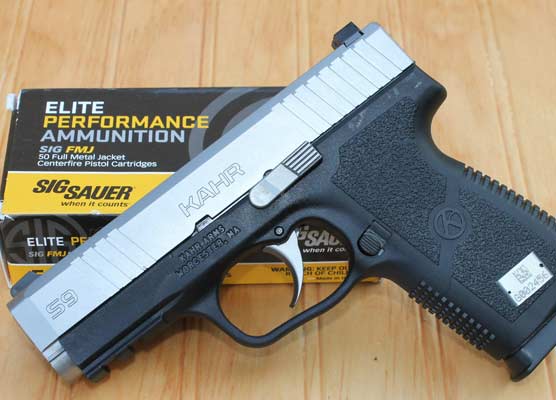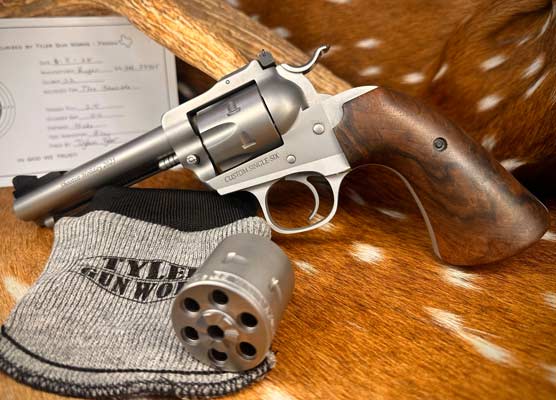The “High Sabrina” Actually Works?
In 2003 a core group of experienced master trainers including six-time shootout survivor and founder Ed Nowicki, formed the International Law Enforcement Educators and Trainers Association (www.ileeta.org). They’ve hosted an annual conference in the Midwest ever since, this year in St. Louis. There, several hundred instructors convened to learn from dozens of vetted presenters for five-and-a-half days of cutting edge “train the trainer” work. We can’t show you the whole gold mine in one column, but here are some of the most valuable nuggets I encountered.
Fine Points
Paul Taylor, a Senior Instructor and Course Coordinator at Force Science Institute — presented “High or Low: The Impact of Muzzle Position on Response Time and Decision Making.” The lecture came from two of Paul’s own studies on this topic. He found officers took 0.30 of a second to realize changes in the situation they faced, but could fire at a rate of 0.25 seconds per shot, or faster. Aimed in, he determined average time was 0.31 seconds with a regular start signal, but with a shoot/no shoot light signal this went up to 0.56 second, and it averaged 0.39 of a second to respond to a visible weapon. Paul cited a 2011 study by Peter Blair confirming the above. He also cited Force Science’s recent findings on what they call Dispatch Priming: what the officer was told to expect influences his perceptions and reactions when he gets to the scene.
Paul found low ready slower than high ready: the decision to shoot takes longer than the movement required to fire. He also found low ready led to what he called “oversteer” — less accuracy, with the first shot often high over the shoulder.
Many instructors laugh at the muzzle-high position often seen on TV, known colloquially as “the High Sabrina” from the old show Charlie’s Angels. But Taylor noted some departments have found “Sabrina” high ready better when an officer has to run with his pistol out.
Brain Trust
For 16 years at ILEETA I’ve run the Deadly Force Panel of Experts, this year assembling 16 men and women whose total police training experience added up to close to half a millennium. Among the topics: cops thrown under the bus by bosses and “getting ahead of the narrative.” The venue being so close to Ferguson, where the community burned after the false trope of a “hands up, don’t shoot” fatality at the hands of a cop, many in the audience knew first hand the price of not doing so. Forward-thinking agencies have led the way in preventing civil disturbance by explaining controversial police shootings to the public as soon after the incident as possible.
There has been broad acceptance of SOLO (Single Officers Life-Saving Others) concept of response to “active shooter” incidents, pioneered by Ron Borsch, who was on the panel. Panelist Don Gulla pointed out the importance of broadcasting on the radio while responding, “I know this suspect, he likes to fight cops.” That’s a nugget, right there, for both street and court survival.
“Active Shooter” Interdiction
Serving on the Active Shooter Panel of Experts, I hated the term and so did most present. Active Shooters should be those who train regularly with firearms and those we fight are “active killers” or, Ron Borsch’s term, Rapid Mass Murderers (RMM). “Active Shooter” is still used largely because that’s the terminology of some sources giving grant money for training and equipment. Don Alwes, who led the panel, is seeing more officers killed, more citizens fighting back — and more friendly fire tragedies in recent events.
Police instructors generally favor training school faculty to shoot back, usually with a two-tier program: Primary armed guardians locking down and protecting their own classrooms, with a second level of more highly trained armed volunteers to “run to sound of guns.”
Morgan Ballis who has taught over 1,500 educators, 17,000 students and 1,000 LE and military in active shooter response, is the son of a survivor of the 2011 Gabby Giffords incident. He pointed out emergency medical response to such incidents has been emphasizing tourniquets because of their many proven lives saved in military combat and police shootings. But, treatment of torso wounds may need more emphasis than tourniquets at the scene, since most military and LE training is for casualties who are wearing body armor.
Gear
The seminar encompasses the ILEETA Expo, where police equipment makers show their latest. Many liked the Cheata Tactical leg rig’s ability to carry a backup gun or med gear comfortably. A training pistol (Smart Firearms) not only “shooting” laser beams but sending audible and visible alarms in dry-fire training if a trainee’s finger enters the trigger guard prematurely. But ILEETA is far more about software than hardware: The “job” is not about equipment, it’s about people.
For more info:






